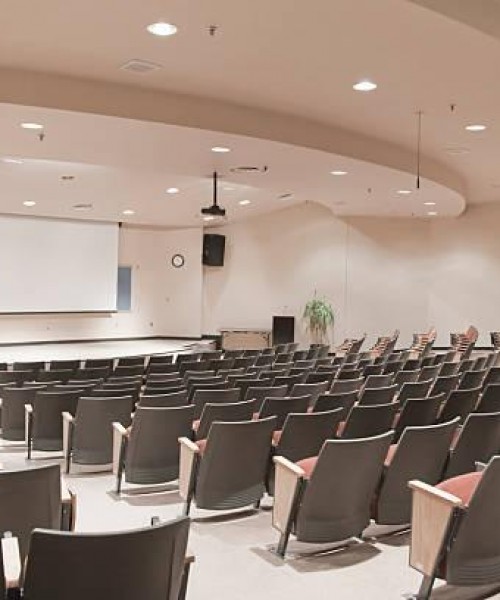Trade Deficits
During the period of 1990, Pakistan's share was 0.2% of the global trade. After 20 years it has come down to 0.12% in a very buoyant world economy. World trade has been growing faster as compared to the world output. India in the same period had doubled its share from 0.7% to 1.4%. Pakistan is stuck with only a few merchandise - textiles, leather, rice, sports, goods and the surgical goods. We have unable to entered the markets with more dynamic products. All our exports are to a few markets - the USA, EU and the Middle East. So this narrow export base and very limited geographical spread are not allowing us to expand our share. Unless we improve the quality of our products, go out and do the marketing abroad, invest in research and development, the prospects do not look promising.
The graph given below depicts how imports and exports have recovered from economic turmoil of 2008-09.
It is clear from the table below that Trade Deficit started with -USD 294 Million & reached to - approx more than USD 10 billion in just 9 years.
Decreasing FDI
The global inflows of foreign direct investment declined by close to 40.0 % in year 2009 due to global financial and economic crises. Pakistan also witnessed the declining FDI according to global FDIs trend during the period under review. As after growing at an average rate of 61.0 % per annum for four years, Pakistan's FDI declined abruptly by 31.2 % in 2008â€09. This situation further deteriorated in the current fiscal year owing to a combination of internal factors like energy crises and law & order situation along with external factors of global economic slowdown. FDI in the country declined by 44.7 % during the period of Julyâ€April 2009â€10.
It is clear from the graph that it soared in 2008 - 09 and now it is declining due to unstable political environment & terrorism. Oil & Gas is the major sector which attracts about 34% of the FDI currently.
High Fiscal Deficits
Pakistan's government takes away 20% of national income while 80% is left in the private sector and 20% in the hands of the government is spent on defence, debt servicing, development on education, health, general administration etc. The revenue generated is only 15% of the GDP at best, and in the worst days it is 12 to 13%. Out of the every rupee of income received by a Pakistani, on average, tax paid is only 9 paisa and 91 paisa remains with the individual. In 2007-2008, Pakistan's fiscal deficit was more than 7% which means its income or revenues were only 13% of GDP whereas, expenditures were 20%. To bridge the gap between revenues and expenditures, external donors or the central bank is looked at. The financing provided by the SBP leaves a higher inflationary effect, which is injurious to the middle class, those earning fixed wages and salaries and the poor. Debt to GDP ratio has moved from 50% in last two yrs to 58%, and with all the borrowings it may go to 60%. The reason the widening fiscal deficit is low revenue collection. How can you expect that only nine paisa out of every rupee of income generated by Pakistani population suffices to meet the expenditures. In India, tax GDP ratio is 15% and still they have fiscal deficit. Many people say that defence takes away a lot of government expenditure. Whereas, the fact is that defence expenditure is only 20% of government expenditure. It is only 4% of GDP, and is not such a large expenditure as compared to debt servicing which is 7-8% of GDP and almost 30% to 35% in last two years. Therefore, government has to contain its fiscal deficit by raising revenues. Agriculture incomes are exempt, professionals, retailers and wholesalers, transport owners and many other service providers evade taxes by paying a small fraction of what is due.
Monstrous Debt
Pakistan's chief problem is a monstrous debt. Without monetary resources with which to fight the numerous problems of the nation, Pakistan remains overpopulated and poor. Sources of debt include:
Large military spending
Trade imbalance
Power/Fossil fuel issues
Primarily this debt has accumulated due to the continuing conflict with India over the Kashmir region. This border conflict has been raging for the last half of the twentieth century. GoP spends roughly one fifth of its budget on its military, further limiting potential spending on social improvements and programs. Another factor is Pakistan's dependence on imported fossil fuels. Pakistan uses 350,000 barrels of oil per day of which 293,000 barrels per day are imported. Also, 1.1 million short tons of coal are imported each year. The combination of these two alone make up a huge part of the over one billion dollar trade deficit. These resources are used primarily for the generation of power.
Due to all of these sources of debt, half of government expenditures are dedicated to fulfilling debt repayment obligations. In order to finance these payments, additional grants and loans are required each year totaling approximately 25% of revenues. This prevents Pakistan from devoting significant resources to economic development and/or social improvements. Escalating public debt does not bode well for macroeconomic stability and growth as it exerts upward pressure on interest rates and crowdsâ€out domestic private investment.
Based on projections for the end of FY10, Pakistan has one of the highest public debtâ€toâ€GDP ratios amongst emerging economies as shown in figure.
Total Public Debt (TPD) posted a growth of 12.2 % during the first nine months of the current fiscal year and reached Rs. 8,160 billion at the end of March 2010.
The total debt is 55.6 % of our GDP which is every high.
4.4 % of GDP is used for debt servicing and 46% of Government revenues which is very high. After defense serving which is also 3-4% of our GDP 75 -80% of our government revenues which leaves very little money for running the govt. and doing development projects.
The drying up of External Inflows increased reliance of govt. to borrow internally and since in the absence of efficient capital market the govt. borrows it from Central & commercial bank which extensive government induces inflation through the expansion of money supply.
Sky Rocketing Unemployment
The unemployment currently stands at staggering 20% or more and it has significantly also as 1/5th of the agricultural land came under water affecting nearly 20 million people. Due to this agricultural sector labor force which is nearly 50% of the work force 1/6th got affected though for short terms.
The power shortages have also severely affected the manufacturing sector and factories are running half the time affecting production as well as contributing towards high unemployment.
Also the unstable political environment, law and order situation, global financial crisis impact, high illiteracy rate and low investor confidence is adding fuel to the already high un-employment situation.
Inflation
Pakistan faces high double-digit inflation. The month on month increase in food and nonfood inflation has been especially disappointing. The core inflation which represents the rate of increase in cost of goods and services excluding food and energy prices also is above approximately 20.0 %. Since external cash flows are dried up due to global financial crises and because of political law and order situation FDI has also reduced sharply therefore Govt. does not have any option but to borrow internally from Central and Commercial Banks thus making the inflation go up. Also due to flood 1/5th of the agricultural crops have been affected due to which the food inflation has jumped tremendously up to 40-50% this year. This inflation has further increased due to increase in prices of fuel, gas and electricity tariff which pretty much affects all the prices in all the sectors.
Low Tax Net and Collection of revenue
Pakistan has one of the lowest taxes net among the developing nations and we only collect tax equivalent to about 9-10% GDP.
Our tax revenues are approximately 10% of our GDP and this revenue doesn't even fully cover our defense and debt servicing which amounts to around 10% of our GDP. There is only the salaried class of this country which amount to less than 5% of the total labor force that gives tax. Agriculture incomes are exempt from taxes and professionals, retailers, wholesale, transport owners and many other service providers evade taxes by paying a small fraction of what is due. Also it is estimated that nearly 300-500 billion rupees worth of tax revenue is leaked due to corruption.
Our tax net is very narrow and we have to widen it if this country plans to retire its debt, avoid more debt, spend on social programs like health, education, and human skill development, keep inflation to single digit and achieve GDP growth of 8% and more.
Slow GDP Growth Rate
The GDP growth was very good 2003 to 2007 averaging to about 7%. However after the government change and political instability in 2008 coupled with Global financial crises it went to 1.2 % in 2008-09 and currently expected to touch 4%. All the major sectors like agricultural, manufacturing and service sector has taken a hit in major years.
Agricultural sector which is a biggest sector is growing at snail's pace of 2% which needs to be further improved easily if government pays proper attention to this sector which is the bread & butter of Pakistan and employees the major work force of the country.
Manufacturing can be improved tremendously as well but because of critical energy shortages in the country in the last 3 years this sector growth is curbed as well.
Lagging Social Indicators
One of the most glaring weaknesses is that a country like Pakistan that should have had best indicators in literacy, infant mortality, fertility rates, in access to water supply, in primary enrolment ratios has social indicators which are comparable to Africa rather than to the countries of similar per capita income. It means that if we had literacy rate of 100% instead of 55%, then in 2009-2010 our per capita income would have been 2000$ rather than 1000$. Instead of 30 million middle class in Pakistan we would have 60-70 million middle class people; we would have poverty reduced to 15-20%. We have committed to achieve the millennium development goals by 2015 i.e. we will be able to reach
80-85% literacy rate, but it is doubtful that this will happen.
Energy and Water Shortages
In recent days we have faced most drastic problem which slowing down the overall economy due to energy and water shortages. The problem is not only related the generation capacity of existing power plants it also related to shortage of water resources which unable to produce energy. The inefficiencies of public utility companies, the exceptionally high Transmission and Distribution losses, the non-payment of electricity dues and the circular debt problem have exacerbated the situation. Government of Pakistan out of its own limited resources is paying 200 billion rupees ($2.5 billion) every year as subsidies to power companies. We have silting of our dams, but not a single new large storage reservoir has been constructed since Tarbela in 1974. Water course losses of about 20-25 % are depleting the water availability at farm level. Even after these losses, the water is inequitably distributed. As a result the productivity of the poor farmer is only one third of that of the large holders. If water was equitably distributed and the small farmer got his due share, the productivity gains will translate into additional income for the poor (in turn reducing the incidence of rural poverty) and generating surplus food grains, cotton and fruits and vegetables that can add to export earnings of Pakistan.
The impact of rising purchasing power in the rural areas would also be beneficial for domestic manufacturing industry which is facing deficiency in demand.
Cost of Doing Business is High
Pakistan is ranked among the bottom half of the rankings of the countries where cost of doing business is quite high. It is not high for any particular reason but because of our bureaucracy totally sitting on their seats without taking actions or decisions in time. Unless there is some pressure or incentive for them, the normal businesses particularly the small and medium businesses have serious problems at the hands of bureaucracy. Even if we have investors who are welcomed by the federal government, when it comes down to provincial and local governments there are given a run around - the land is not available, the water is not available, the gas is not available, electricity is not available, road is not available. Lack of coordination among various government agencies, innumerable laws and regulations that are antiquated and outdated have proved to be serious impediments. Labor laws, inspections by multiple agencies, the delays in the court system, infringement of intellectual property rights and evasion of taxes by competing firms in the informal sector have rendered some of the well established firms unprofitable, or the feasibility of starting near ventures questionable.










